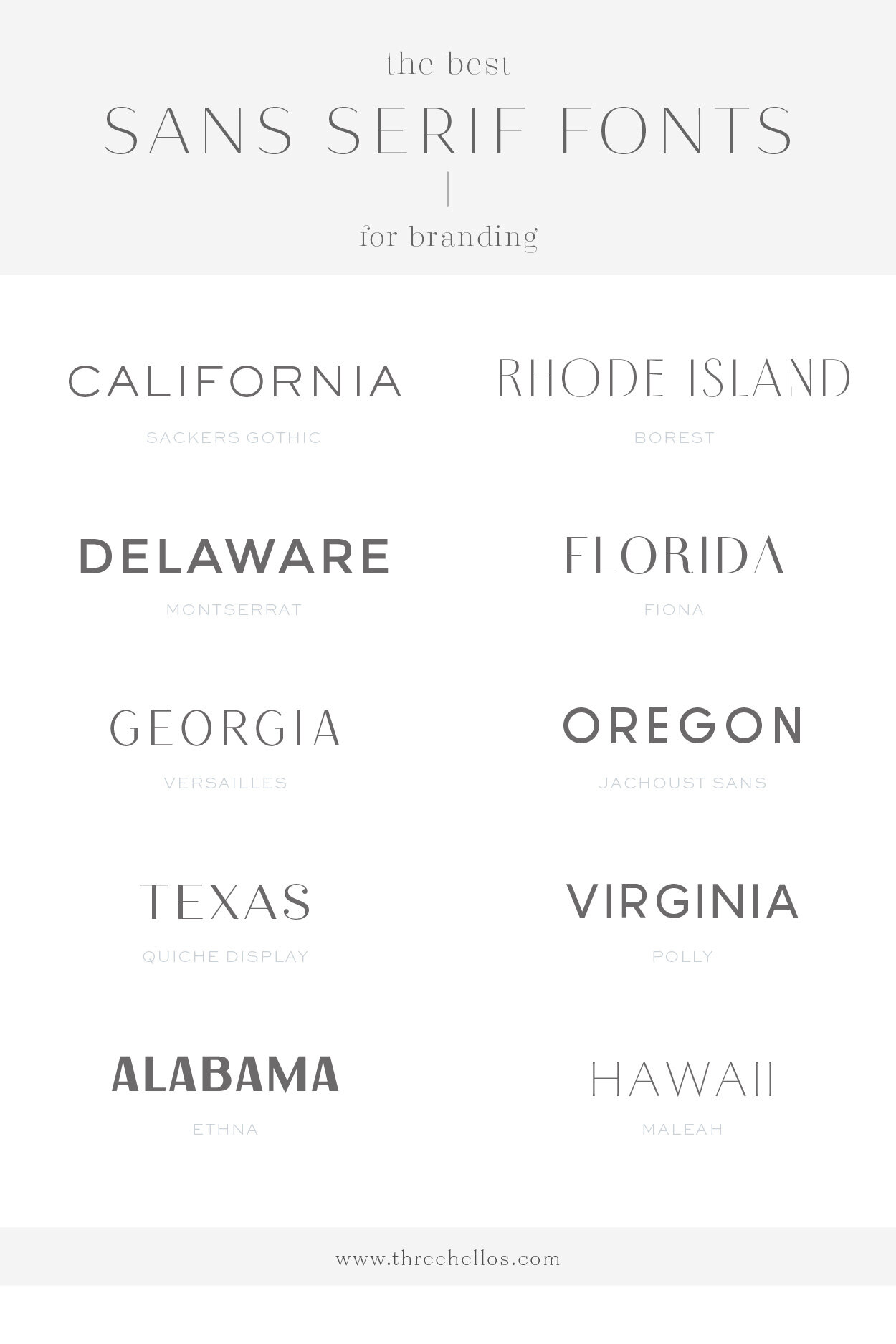

- Popular sans serif typeface how to#
- Popular sans serif typeface software#
- Popular sans serif typeface free#
When is a Sans Serif typeface right for you? Sans serif fonts are generally easier for children to read because they’re simpler. Sans serif fonts are often used on the web for large text groups because of the lower DPI (dots per inch) that screens have compared to print. Some of the most popular sans serif typefaces are Arial, Helvetica, Open Sans, Calibri, and Verdana. They lack the strokes that distinguish a serif typeface, hence using the French word “sans,” which means “without.” Sans serif typefaces are often used to signify something clean, minimal, friendly, or modern. Sans serif typefaces are considered more modern than serif typefaces. So, what are sans serif fonts? What about serif fonts? How do they differ, and how can you tell them apart? 1. You need to make sure you’re picking one that matches the tone of your content.

Different styles of type create different moods. Once you’ve decided on the particular mood or emotions, you want to evoke with your content, you can match that up with a typeface. But for now, it’s essential to keep in mind that since there are thousands upon thousands of typefaces available, being able to decide if you need a serif, sans serif, or script typeface ahead of time will significantly help you in your search. We’ll dive into the differences between each typeface category below. There are essentially three different categories of typefaces: serif, sans serif, and script. But if you’re used to scrolling through your typeface options and selecting one at random, you may need a more extensive introduction. Understanding the connotation of each typeface category can help you choose the right one for your next project. Choose one typeface for titles and another typeface for the body paragraph to maximize readability and add interest. Selecting only one typeface category may look a little bland.
Popular sans serif typeface free#
Though you probably don’t want to choose more than a few typefaces for your project, you should feel free to mix serif and sans serif fonts. Using too many typefaces will confuse the reader and leave your brand lacking a cohesive, recognizable style. It’s easy to get excited about all your typeface options, but it’s usually best to stick with just one or two fonts per project. Are you youthful and energetic? Or formal and refined? Do you want to show off your modern aesthetic or create an air of authority? As we’ve already discussed, serif and sans serif typefaces give off a completely different vibe, so it’s essential to choose the typeface that matches your brand. The quickest way to choose a typeface is to consider your brand’s style. Here are a few tips to help you narrow down your options.
Popular sans serif typeface how to#
Now you can answer the question, “What is serif and sans serif?” but you may still be wondering how to choose the suitable typeface for your next project. On the other hand, when you choose a suitable typeface, your message will be more effective and easier to read. Choose the wrong typeface, and your project may not achieve its intended purpose. But in reality, typefaces make a big impact in conveying your message and capturing the attention of your target audience. When you’re writing a marketing pamphlet or creating a poster, the typeface you choose may seem of little importance.


Let’s learn about the particularities of each one of them! Why do typefaces matter? They are also used in small texts, titles, captions… Almost everywhere! The sans-serif fonts are classified into three or four groups (depending on if you split the last category into grotesque and neo-grotesque or not). Today, these sans serif fonts are used in blogs and online articles in newspapers with large bodies of text because their legibility on-screen is excellent. They were seen as more modern and informal than the usual fonts with serifs that we still see in print and screens. They started being widely used during the 1920s Bauhaus movement. Sans serif fonts, then, are the ones that don’t have these ornamental lines in them. But for designers, knowing more than the font names are essential.
Popular sans serif typeface software#
What is sans serif fonts? Most people who work with a computer are used to reading these names (serif, sans-serif, sans…) on their font list when editing a text document on a word processor or using image edition software to add some text to a photograph.


 0 kommentar(er)
0 kommentar(er)
